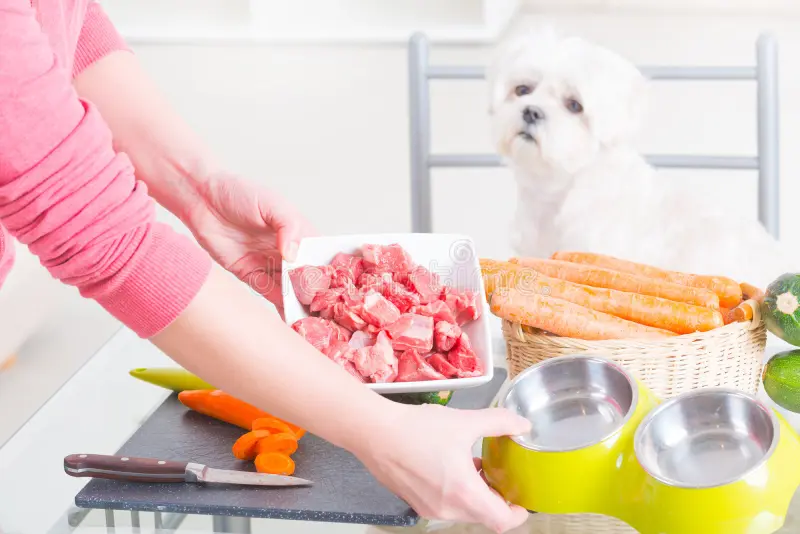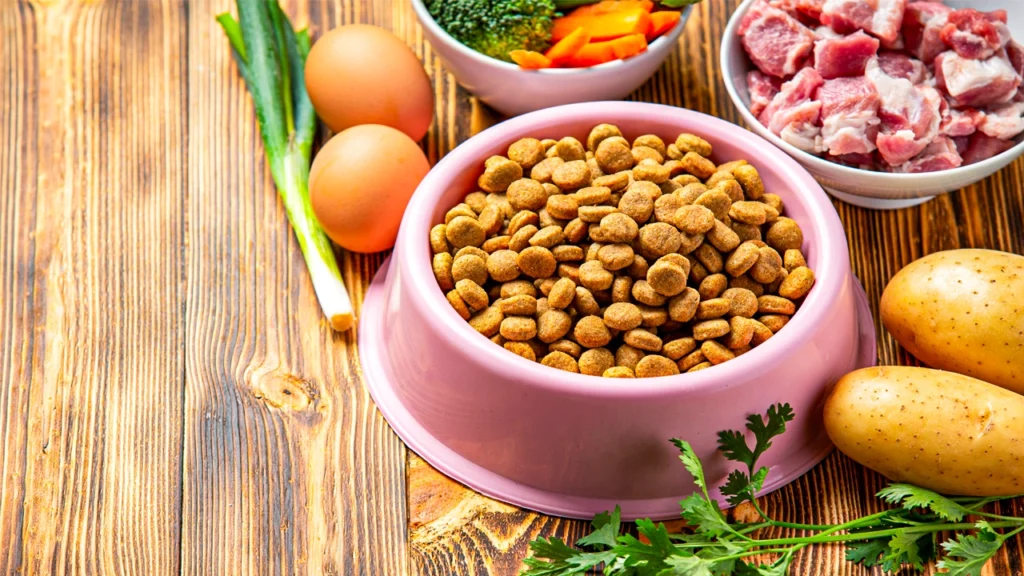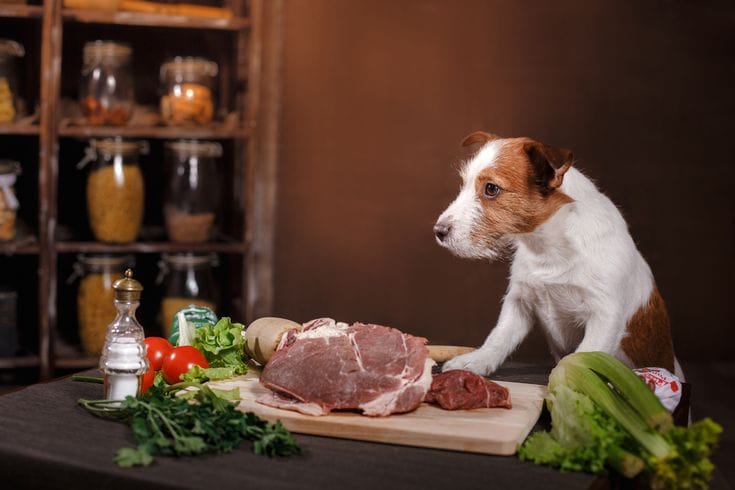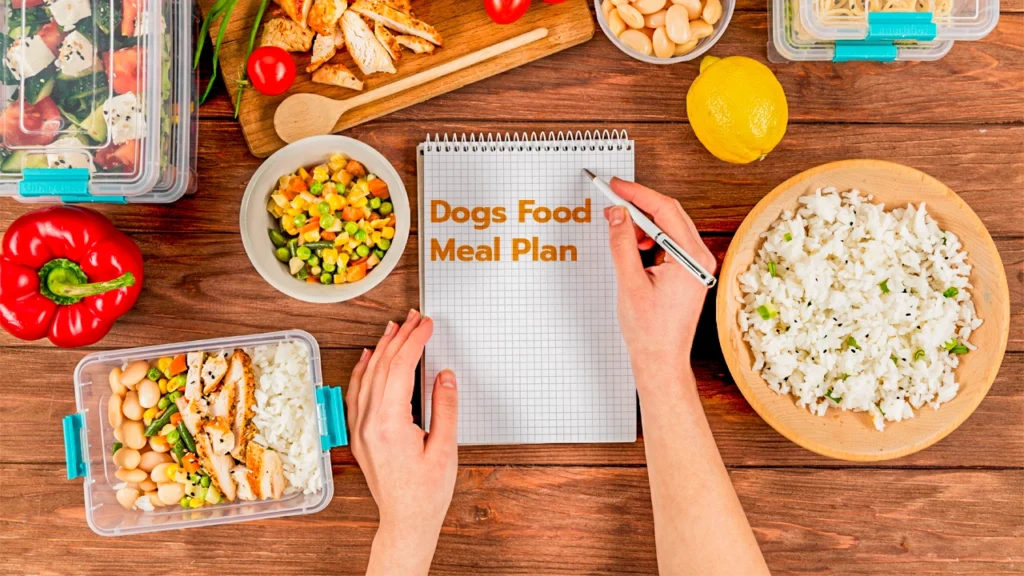
Is Homemade Dog Food Recipes Safe For Pet? | Everything You Need to Know
Homemade food is growing in popularity due to its extraordinary nutritional value and cost-effectiveness. Additionally, it gives you complete control over ingredient additions that are safe for your pet’s health and suit their taste perfectly. However, not everyone prefers DIY homemade food for dogs; instead, they buy ready-made options online or in-store.
Are you unsure whether ready made or homemade dog food is better? You’ve come to the right place. Pet owners are now shifting to prepare dog meals at home to maintain a balance between health, natural ingredients, and nutritional value. But here, one question arises: Is homemade food for dog really worth it? If yes, how do you DIY make dog food? Don’t worry, this guide by Pet Life Expert covers the benefits, essential ingredients, and recipes to help you out with making healthy dog food.

Why Is Homemade Dog Food Worth It?
Just as humans prefer hygienic food for themselves, they may want the best for their pets as well. Although commercial dog food contains healthy items, it may still include some harmful additives and low-quality ingredients. Research on commercial food for dogs proves that consuming an unbalanced diet can lead to several potential risks for your dog.
That’s why most pet owners are now choosing the homemade route. Because among homemade dog food vs ready made dog food, the DIY option gives you the power to control every ingredient in your DIY dog food recipe. While homemade food is certainly worth it, it comes with its own set of challenges.
Benefits of Making Dog Food at Home
Preparing a balanced diet for dogs at home can be beneficial for your pet’s wellness. Look how DIY dog food helps you in many ways.
1. Quality Check
The most beneficial aspect of DIY dog food is their flexible control over quality. Because it allows you to choose the best ingredients. And you’ll be aware of where this ingredient came from and how it can be used to make a difference in food’s appearance and taste.

2. Custom Nutrition
When it’s about DIY, you add the best ingredients while preparing for dog food at home. The best part is that you can custom select the amount of a specific element to meet your dog’s specific needs, like considering their weight, age, breed, health conditions, and activity levels.
3. Avoiding Additives
You may know that most commercial foods are made from artificial preservatives, flavors, and fillers. These artificial ingredients can trigger many health related issues and allergies. However, vet approved dog food recipes can eliminate all these harmful ingredients and focus on the organic meals.
4. Increased Variety
Giving your dog a homemade diet can improve your dog’s health because it is packed with essential vitamins and minerals. Also, you can choose what to include and what’s not while avoiding fillers which allows you to prepare variety of food for your pup.
4. Better Tasting
Undoubtedly, homemade meals taste better than commercial foods for dogs. Home-cooked dog food improves digestion, nutrition, and provides essential vitamins and minerals. While store-bought foods contain fillers and additives that can harm dogs.
Possible Risks of DIY Made Dog Food
While there are various benefits of DIY pet food, there are some associated risks of homemade food for dog. As a beginner, you must be aware of these potential drawbacks.
1. Nutrient Deficiencies
Maintaining nutritional balance is one of the biggest risks of dog food. Dog food must involve particular ingredients, and their absence in meals can lead to health issues. For instance, a lack of calcium can result in bone issues.
2. Food Safety Concerns
Another major concern is safety because you need to handle some raw ingredients like meat. Meat may include the risk of contamination. Therefore, make sure to prepare and store raw ingredients carefully to avoid harmful bacteria like Salmonella.
Essential Nutrients to Include in Your Dog Food
To give your dog a well-balanced diet, it’s crucial to include the following nutrients:
1. Healthy Fats
For skin and coat health, the addition of healthy fats is encouraged. You can add sources like flaxseed and fish oil, as it will positively impact their health.
2. Protein
Another most important healthy source is protein, which helps in building and repairing tissues. Make sure to add fish, beef, and chicken.

3. Carbohydrates
For immunity and energy, carbohydrates are also an essential ingredient. The addition of rice, oats, and sweet potatoes is another best thing in food.
4. Vitamins and Minerals
To improve body functioning, minerals and vitamins play a major role. You can consider adding fresh vegetables like spinach and carrot to fulfil their vitamin needs or deficiency.
Ingredients To Avoid in Self-made Dog Food
It is not easy to make health friendly and safe home made dog food because you can’t feed just everything you eat as a human being to your pet. Below is the list of some toxic food elements that need to be avoided:
- Chocolate
- Onions
- Garlic
- Grapes
- Certain Nuts
Significance of Balanced Diet for Dogs
The key to your dog’s health is a balanced diet, which is why vegetable and meat feeding is not enough. You need to prepare a properly planned meal plan that includes the following ingredients in the right proportions:
- Proteins
- Carbs
- Fats
- Vitamins
- Minerals
How to Start Making DIY Dog Food Safely?
Here are the steps to DIY making dog food at home.
1. Consult a veterinarian
Before you begin with the best dog food recipe, it is advised to consult a professional vet or pet nutritionist. A well-trusted vet can provide you with a custom meal plan that meets your dog’s needs.
2. Creating a Meal Plan
Once you get the proper guidelines from a vet/nutritionist, you can make your own meal plans for your dog. Make sure to evaluate dog’s weight, breed, age, activity, and health conditions.

3. Decide On Feeding Times
Want to know how often should you feed homemade food to dog? Well, meal frequency depends on the age, size, and activity level. Some dogs do well having two meals per day while some need frequent feeding.
How to Store Homemade Food For Dog Properly?
Even if you make home-made dog food recipe vet approved, keeping it fresh to serve to dog is crucial. For this purpose, you can store your home-made dog food in an airtight container in the fridge. It is advised to prepare food in small batches and must utilize it within 3-4 days.
Signs Your Dog May Not Getting Needed Nutrients
If you tried healthy homemade food recipes for dog on your own, but you notice any physical problems rather than health improvement, then it’s a sign that your dog’s diet lacks essential nutrients. As a result, your dog’s skin starts showing symptoms of:
- Dry skin
- Lethargy
- Weight Loss
Can Homemade Food for Dog Be Affordable?
It may seem expensive at first, but an expert nutritional dog food guide can help you have the best, nutritious food at low prices. DIY made dog food can go in the long run. And when it helps avoid health issues, you can save the cost of a vet or nutritious visits.
Misconceptions About Homemade Food for Dog
Myth 1–Meat is the only food dogs need.
Myth 2– It is safe to give human food to dogs.
Myth 3–Homemade food is much healthier than commercial.
Debunking these myths is crucial for making the right dietary choices for your dog.
Final Remarks
Homemade dog food is a safe and healthy choice for their well-being. However, extreme carefulness is required to maintain food’s nutritional value. No matter if it’s homemade, there are dog food ingredients to avoid to ensure it fits right for your dog’s health and happiness. The main thing is you must know how to make dog food at home and include all the necessary nutrients. It is strongly advised to consult a professional before you include any food to your dog’s diet.
FAQs | Frequently Asked Questions
Which Ingredients Need To Avoid In Homemade Dog Food?
Avoid toxic and artificial ingredients like raisins, fillers, garlic, onions, avocados, grapes, nuts, caffeine, and chocolate. Additionally, be careful with seasonings and spices that could upset your dog’s stomach.
How Do I Know if Homemade Food Meets My Dog’s Needs and is Nutritionally Balanced?
Check your dog’s meal components for nutritional balance. Make sure the diet plan includes a variety of essentials like carbohydrates, vegetables, proteins, and healthy fats. Also, ensure the food contains every ingredient suggested by the vet or nutritionist to achieve a complete diet balance.
Is Feeding the Same Food To Dog Everyday Okay?
It is not prohibited not to revise the same meal every day. However, rotating the recipe will help resolve nutrient deficiency issues. Dogs require various nutrients in their diet to set the perfect nutritional base.
How to Make Homemade Dog Food?
To make homemade dog food, you will need some main ingredients like fats (meat and oil), proteins (dairy, eggs, seafood, animal meat), and carbs (veggies and grains). Considering vet’s requirements, you can make a recipe that balances all the essentials.
How Much Homemade Dog Food to Feed?
Well, it depends on the dog size, age, breed, body weight, temperament, and activity level. For an adult dog, 2-3% of homemade food is enough for adult dog. For precise idea, consult with vet or nutritionist.



